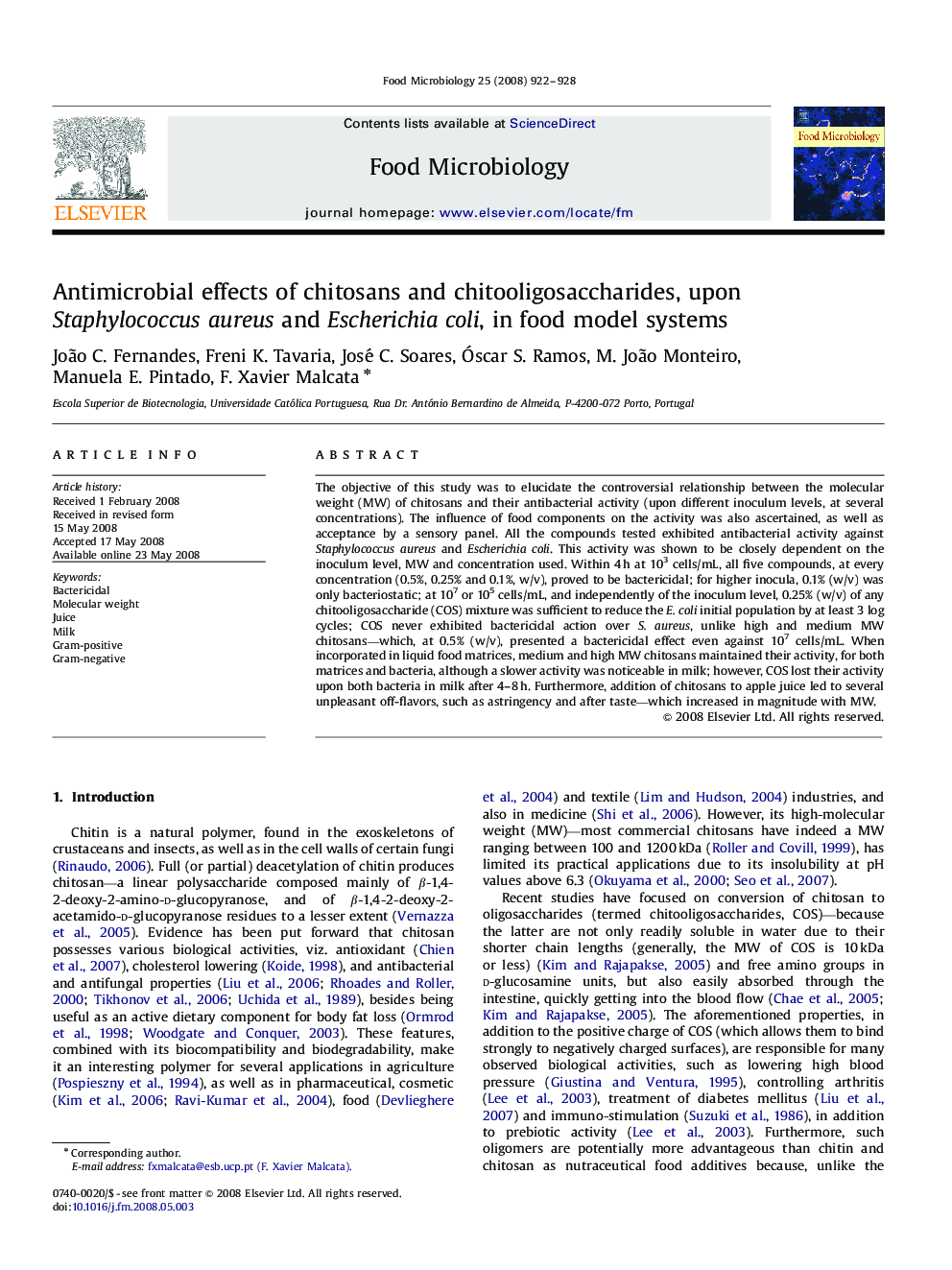| Article ID | Journal | Published Year | Pages | File Type |
|---|---|---|---|---|
| 4363617 | Food Microbiology | 2008 | 7 Pages |
The objective of this study was to elucidate the controversial relationship between the molecular weight (MW) of chitosans and their antibacterial activity (upon different inoculum levels, at several concentrations). The influence of food components on the activity was also ascertained, as well as acceptance by a sensory panel. All the compounds tested exhibited antibacterial activity against Staphylococcus aureus and Escherichia coli. This activity was shown to be closely dependent on the inoculum level, MW and concentration used. Within 4 h at 103 cells/mL, all five compounds, at every concentration (0.5%, 0.25% and 0.1%, w/v), proved to be bactericidal; for higher inocula, 0.1% (w/v) was only bacteriostatic; at 107 or 105 cells/mL, and independently of the inoculum level, 0.25% (w/v) of any chitooligosaccharide (COS) mixture was sufficient to reduce the E. coli initial population by at least 3 log cycles; COS never exhibited bactericidal action over S. aureus, unlike high and medium MW chitosans—which, at 0.5% (w/v), presented a bactericidal effect even against 107 cells/mL. When incorporated in liquid food matrices, medium and high MW chitosans maintained their activity, for both matrices and bacteria, although a slower activity was noticeable in milk; however, COS lost their activity upon both bacteria in milk after 4–8 h. Furthermore, addition of chitosans to apple juice led to several unpleasant off-flavors, such as astringency and after taste—which increased in magnitude with MW.
